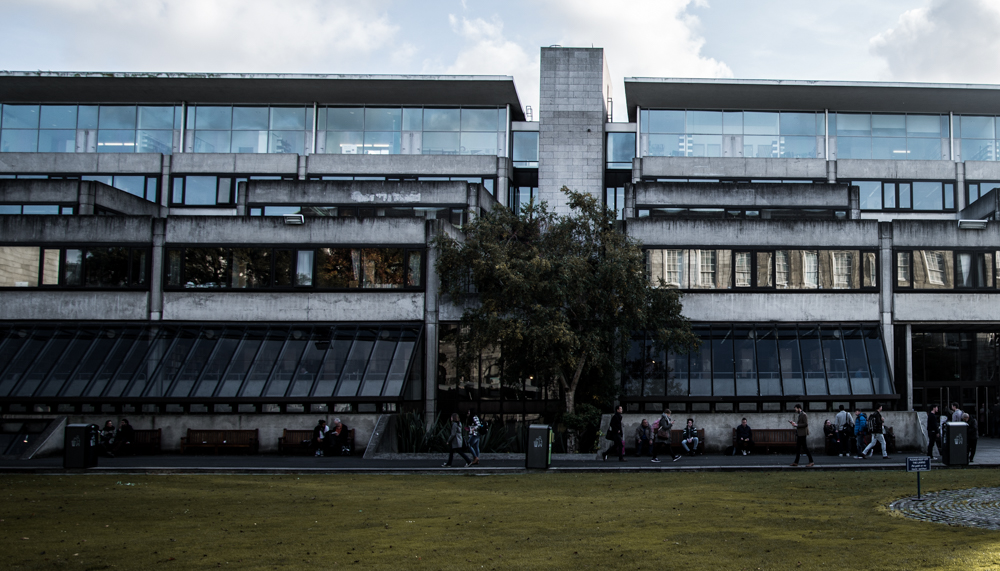Only one per cent of the properties owned by the Faculty of Arts, Humanities and Social Sciences (AHSS) are in “good condition”, according to a report submitted to the College Board and obtained by The University Times, as Trinity prepares for a €4 million refurbishment of the Arts Block.
The report, which was submitted to the Board last December, found that 82 per cent of the faculty’s property requires “modernisation”, while only 10 per cent is described as “operationally safe”. While seven per cent of the faculty’s property is categorised as “new”, this is all found in the School of Business. None of the other 12 schools across the faculty had any buildings that were in good condition, with the exception of the School of Histories and Humanities.
Trinity is currently preparing a €4 million refurbishment of the Arts Block, which accounts for 30 per cent of the total property in the faculty. While it still needs to be approved by College, the refurbishment was announced by Provost Patrick Prendergast, speaking at Trinity College Dublin Students’ Union (TCDSU) council last week, alongside Trinity’s Bursar, Veronica Campbell, who is currently working on a business case for the project.
In an email statement to The University Times, Campbell said she plans to tender for a designer for a feasibility study in the next month, with the hope of beginning the work over the summer of 2018 and 2019. One way the project, she said, will “improve the student experience is through improvements to the open spaces in the corridors by creating break-out spaces for informal learning”.
Not all AHSS schools are located in the Arts Block, and Campbell noted that she was aware that “schools with space outside of the Arts Building also face challenges and those issues will need to be considered in the context of the estates strategy”.
The presentation refers to the consulting firm Turnberry Consulting, who are advising Trinity on the development of their Estates Strategy, and who will advise on the study into the refurbishment of the Arts Block. The company, the presentation states, have provided examples of other universities where “modest refurbishments of brutalist buildings” have improved teaching and break-out spaces.
The overall assessment of academic areas in Trinity found that while only two per cent of the buildings required replacement, 41 per cent of the buildings required “modernisation”. The lack of space in Trinity’s historic campus has been an increasingly pressing issue in recent years, as Trinity’s staff and student numbers have expanded.
The report finds that most academic staff are required to share offices due to insufficient office space and that there is a “disparity” between schools, with some having teaching rooms and others not. Perhaps most worryingly for the university’s senior management, the report finds that “the strategic recruitment of senior academic staff, particularly those who require laboratory space, is at risk due to space constraints”.
Commenting on this, Campbell acknowledged that “laboratory areas are operating at capacity and it is a challenge to identify vacant space”. She emphasised, however, that the “space challenge is a consequence of Trinity’s success in securing research funding so the issue has arisen due to positive news”.
Trinity’s campus is already expanding, with the College’s Engineering, Energy and Environment (E3) Institute planned for the Grand Canal Docks, while buildings like the Trinity Technology and Enterprise Campus (TTEC) in the Grand Canal Docks are consistently under development by the College. The document refers to the potential of TTEC, noting that “the development of TTEC is a major strategic project for Trinity that needs to be understood in the context of the overall campus strategy”.
The presentation will now be used, Campbell said, to help create a “profile” of where space is most needed on campus and “prioritise how the College invests its limited resources in the campus infrastructure”. Part of this profile of space will include the use of a heat map so that College can identify the non-classroom areas most frequented by students and then be prioritised for investment.
Also raised in the presentation was the necessity of developing a “transparent and accurate view of room bookings” as the Trinity Education Project moves towards a fixed timetable.
In the Faculty of Engineering, Maths and Science, five per cent of the buildings require replacement, while 27 per cent of properties require modernisation. In contrast to the Faculty of Arts, Humanities and Social Sciences, 28 per cent of the buildings were in good condition. The report reveals that the School of Engineering is most in need of new buildings, with a significant proportion of the faculty’s property requiring replacement.
The Faculty of Health Science, in comparison, has no buildings in need of replacement. But, 38 per cent of the buildings, the report found, were in need of modernisation.
A number of areas deemed in need of modernisation were highlighted as areas that could benefit from a “capital programme of investment”. Commenting on this, Campbell said that, while the aim is to improve the “entire estate”, improvements were dependent on funding. “Trinity has received no funding for maintenance from the HEA [Higher Education Authority] since 2011”, she said.
This has been a recurring issue for Trinity, whose infrastructure costs are a significant part of the reason why Trinity are forecasted to post a deficit of €34 million in the 2015/16 financial year. In December, The University Times revealed that Trinity is considering the introduction of a student charge to help pay infrastructure costs.
However, some academic areas, especially those in need of drastic replacement, will eventually be replaced. Campbell gave the example of the PC Huts in the East End of campus that will be replaced once the Engineering, Energy and Environment (E3) has been developed.







